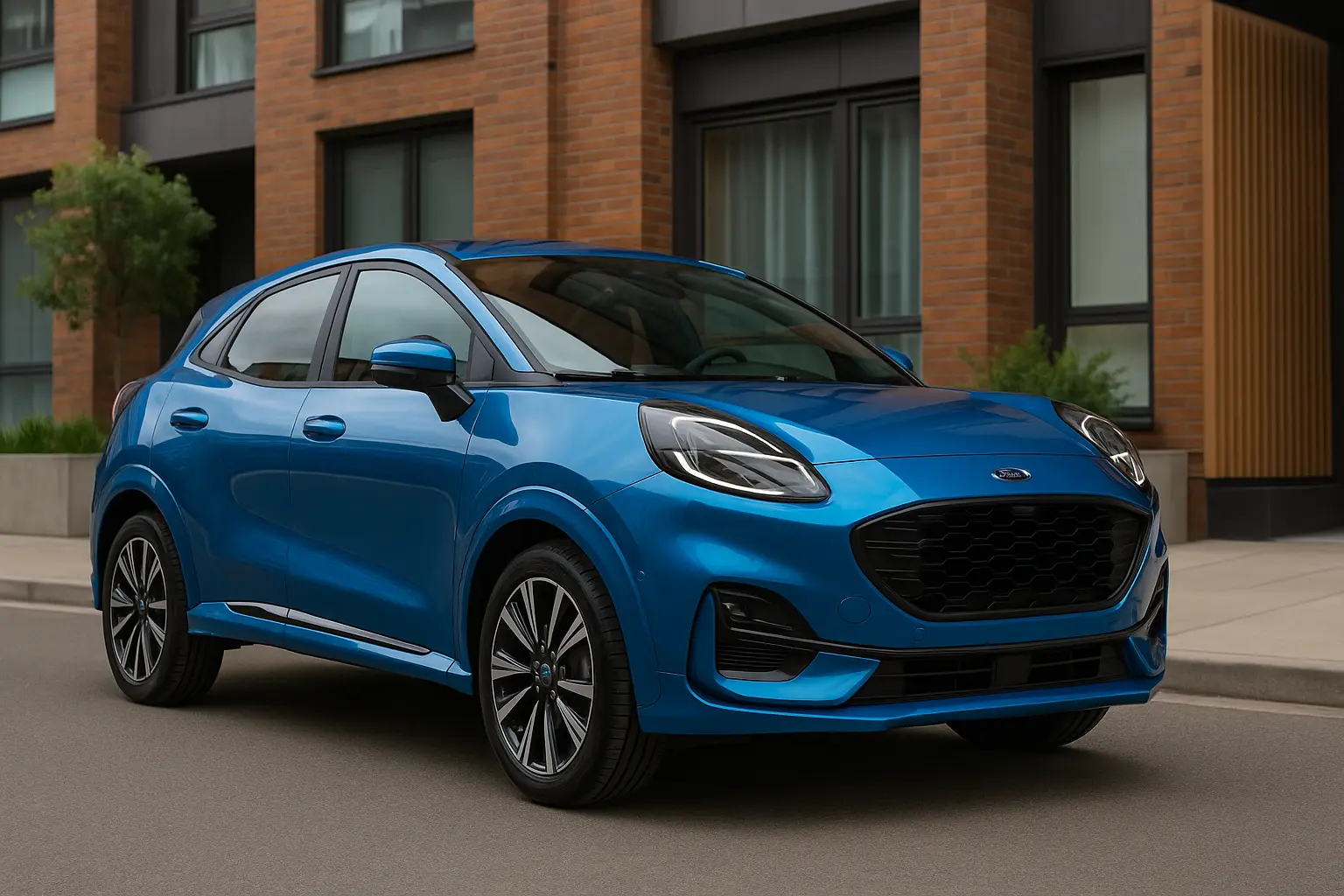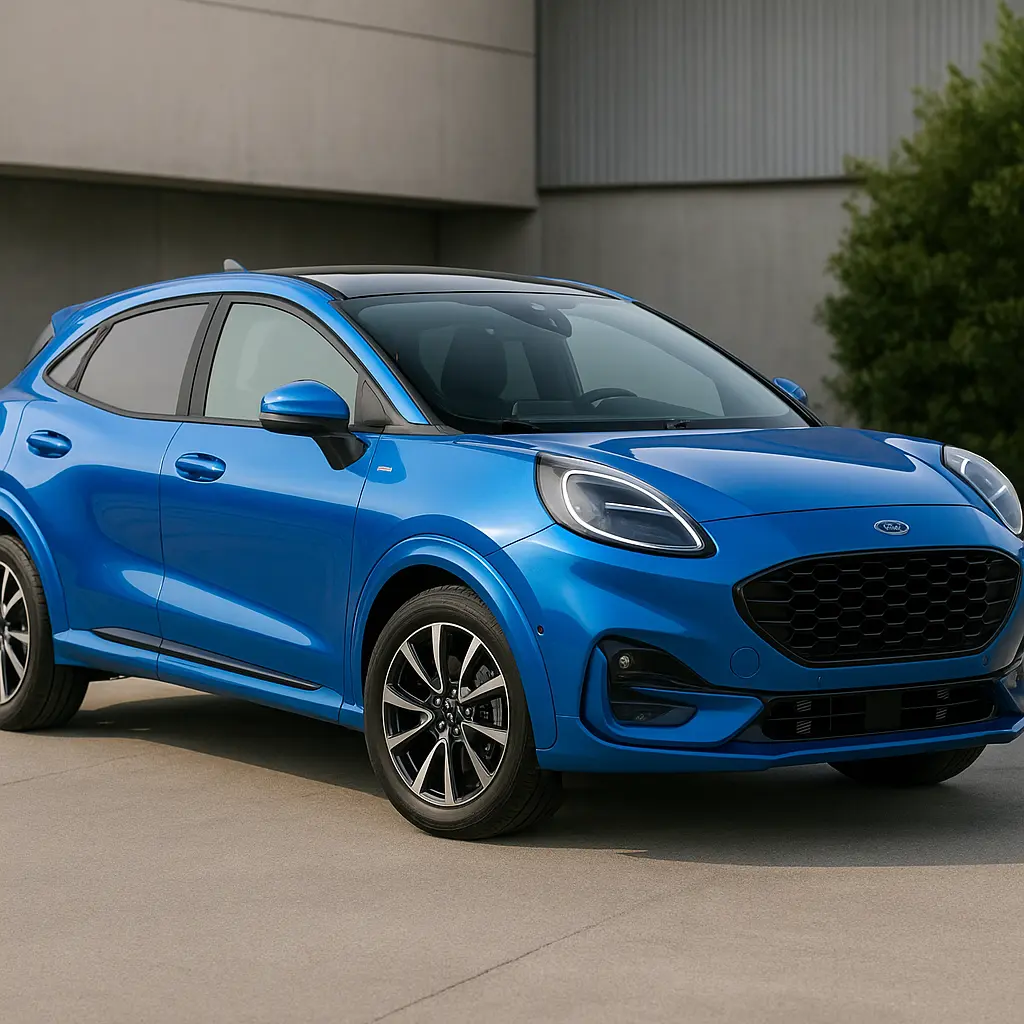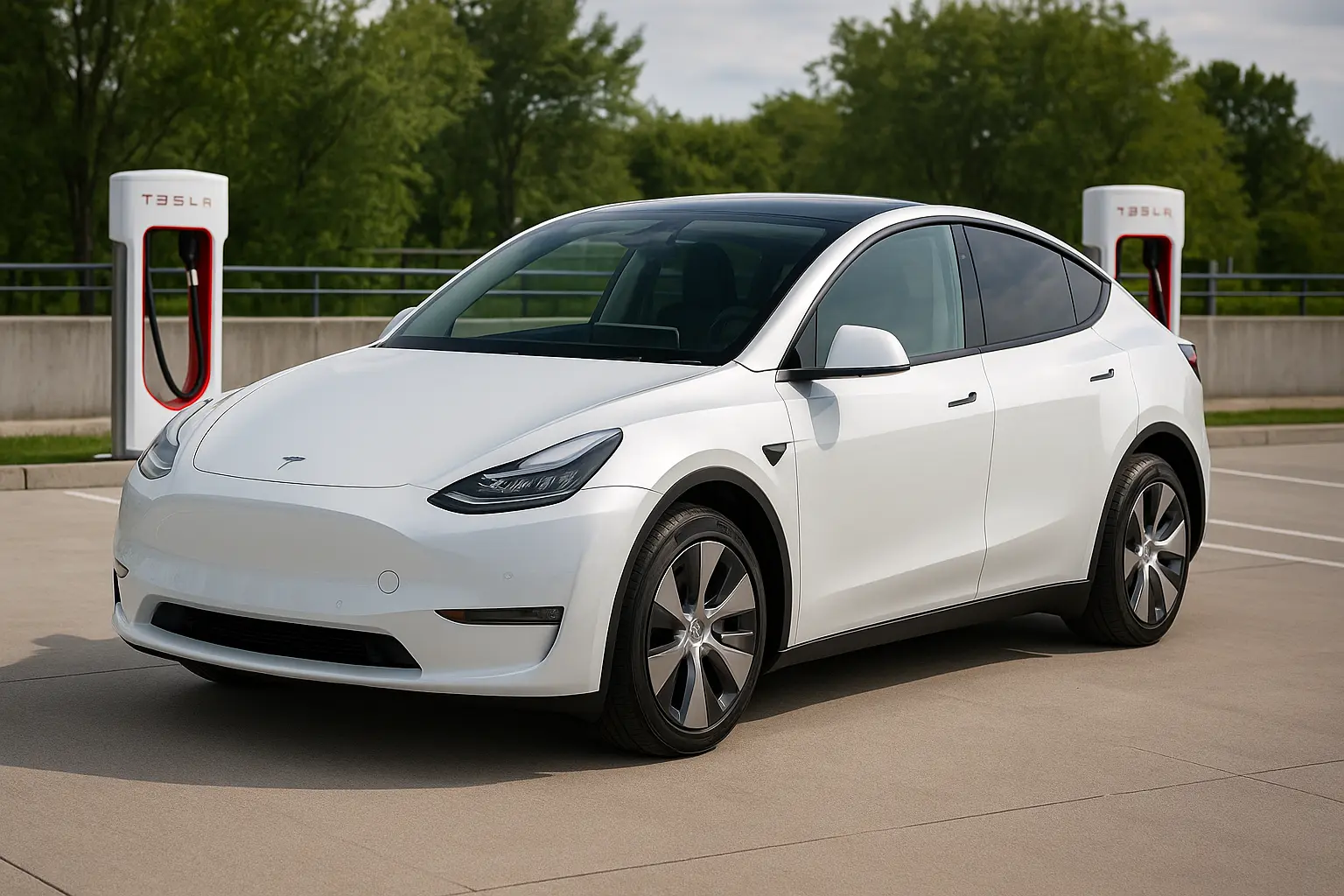Australia’s compact SUV market is growing rapidly, with drivers looking for vehicles that combine practicality, technology, and fuel efficiency without sacrificing style. Among the key contenders, the 2025 Ford Puma has carved out a unique niche. It delivers sporty looks, agile handling, and advanced technology designed for urban lifestyles. For young professionals, small families, or anyone needing a compact but capable SUV, the Puma continues to stand tall against rivals like the Hyundai Kona, Mazda CX-30, and Volkswagen T-Cross.
This in-depth review covers everything about the Puma: design, performance, features, technology, fuel economy, ownership costs, and how it fits into the evolving Australian SUV landscape.

Exterior Design – A Sporty Urban Identity
The 2025 Puma continues Ford’s philosophy of creating vehicles that blend sharp styling with everyday usability. Its design reflects a European-inspired crossover with:
- A bold front grille framed by slim LED headlights
- A sloping roofline that adds coupe-like sportiness
- Distinctive body creases that give the SUV a muscular stance
- Compact proportions, perfect for tight city streets
Compared to larger Ford SUVs like the Escape or Everest, the Puma takes on a sleeker, more youthful personality. The alloy wheel designs have been refreshed for 2025, offering options up to 18 inches that enhance its athletic look. Buyers can also choose from vibrant paint colours such as Desert Island Blue, Fantastic Red, and Frozen White—appealing to those wanting individuality on the road.
Interior Features – Comfort in a Compact Space
Step inside the Puma and you’ll notice that Ford has paid attention to ergonomics and practicality. While compact, the interior feels well thought out.
- Driver-centric cockpit: The elevated seating position gives excellent visibility, while the sporty steering wheel and digital driver’s display create a modern feel.
- Infotainment system: The latest version of Ford’s SYNC 4 system with an 8-inch or optional 12-inch touchscreen supports wireless Apple CarPlay and Android Auto.
- Comfort: Supportive front seats with optional lumbar adjustments, premium fabric or partial leather trims, and ambient lighting.
- Practical touches: Storage space is cleverly integrated, from large door bins to Ford’s “MegaBox” underfloor compartment in the boot—deep enough to store tall items like golf clubs or house plants.
Boot space sits at 410 litres, one of the best in its class, making it versatile enough for shopping trips, weekend getaways, or prams for young families.
Technology & Infotainment
Technology has become a major selling point in compact SUVs, and the Puma doesn’t disappoint. The 2025 model brings updates across its tech suite:
- Digital instrument cluster (12.3-inch on higher trims) with configurable displays
- Over-the-air software updates to keep systems current without dealer visits
- FordPass Connect app for remote start, lock/unlock, and vehicle status monitoring
- B&O Premium Sound System (optional) for music lovers
- Wireless charging pad and multiple USB ports
The interface is simple and intuitive, designed for drivers who want quick access to maps, calls, or music without navigating complex menus.
Safety Ratings & Driver Assistance
Safety remains a top priority for Ford, and the Puma carries a 5-star ANCAP safety rating. Its suite of driver assistance technologies ensures confidence whether driving in the city or on highways.
- Adaptive cruise control with stop-and-go
- Lane keeping assist with road-edge detection
- Blind-spot monitoring with cross-traffic alert
- Traffic sign recognition
- Automatic emergency braking with pedestrian and cyclist detection
- Rear-view camera and optional 360-degree parking camera
These features make the Puma particularly attractive to first-time SUV buyers and families wanting peace of mind.
Performance & Driving Experience
The Puma has been praised for its nimble handling and agility, often described as more hatchback-like than SUV-like. The 2025 model continues this tradition.
Engines and Efficiency
For the Australian market, the Puma offers:
- 1.0-litre EcoBoost turbo-petrol engine with mild-hybrid assistance in some variants
- Outputs around 92kW to 114kW, depending on the trim
- Paired with a 7-speed dual-clutch automatic transmission
- Fuel efficiency rated between 5.3–6.0L/100km, making it economical for city commutes
Unlike larger SUVs, the Puma doesn’t offer a diesel option in Australia, reflecting the market’s shift towards petrol and hybrid powertrains.
Ride and Handling
The Puma’s real strength lies in its handling:
- Light steering, perfect for urban manoeuvrability
- Firm but comfortable suspension tuning
- Dynamic cornering ability, thanks to Ford’s European chassis engineering
This combination makes the Puma enjoyable for spirited driving, something not often associated with small SUVs.
Variants & Features Breakdown
Ford offers the Puma in multiple trims to cater to different budgets and preferences:
- Puma (base): Essential features, SYNC infotainment, cloth seats, alloy wheels
- Puma ST-Line: Sportier design touches, digital cluster, advanced driver aids
- Puma ST-Line V: Adds luxury touches such as partial leather trim, upgraded sound system, and larger wheels
Buyers can also choose the Ford Puma ST (performance variant), though availability in Australia may be limited. It features a tuned 1.5-litre EcoBoost engine, sport suspension, and aggressive styling for enthusiasts.
Fuel Efficiency & Ownership
With fuel prices in Australia fluctuating, efficiency is a top concern. The Puma’s EcoBoost engine offers:
- Competitive fuel economy compared to rivals
- Low running costs thanks to mild-hybrid assistance (where fitted)
- A balance of performance and economy that suits both city and highway driving
Ford offers a 5-year/unlimited kilometre warranty, with service intervals every 12 months or 15,000 km. Ownership costs are kept in check by Ford’s capped-price servicing program, which appeals to budget-conscious buyers.
Competitor Comparison
When compared to rivals, the Puma sits in an interesting position.
- Hyundai Kona: Offers hybrid and electric versions, but less boot space.
- Mazda CX-30: More premium interior but higher starting price.
- Volkswagen T-Cross: Strong practicality but less sporty handling.
- Toyota Yaris Cross: Excellent hybrid efficiency but smaller cabin space.
The Puma positions itself as the sporty choice in the compact SUV segment, targeting buyers who value driving dynamics as much as practicality.
Practicality for Australian Drivers
For Australian buyers, the Puma ticks several boxes:
- Compact size makes it easy to park in crowded urban centres like Sydney and Melbourne.
- High ground clearance gives confidence on rural roads and occasional gravel drives.
- Efficient petrol engine suits Australia’s fuel infrastructure.
- Boot and cabin space are sufficient for small families or couples with active lifestyles.
Pros and Cons
Pros
- Sporty and stylish design
- Agile, hatchback-like driving dynamics
- Strong safety package
- Practical boot with clever storage
- Advanced infotainment and connectivity
Cons
- No full hybrid or electric version yet in Australia
- Rear seat space tighter than some rivals
- Dual-clutch transmission can feel hesitant in stop-start traffic
Buying Guide – Who Should Consider the Puma?
The Ford Puma is ideal for:
- Young professionals wanting a stylish city car with SUV practicality
- Small families who need safety and storage without moving into a large SUV
- Empty nesters seeking downsized vehicles with comfort and technology
- Enthusiasts who want a small SUV that’s actually fun to drive
Those needing larger rear seat space or hybrid powertrains may lean towards competitors like the Mazda CX-30 or Toyota Yaris Cross, but for pure driving enjoyment, the Puma holds its ground.
Future Outlook – Will Ford Add Hybrid or EV Versions?
Globally, Ford has already introduced hybrid versions of the Puma in Europe. With Australia’s shift towards greener cars and the rise of EVs, it is likely that hybrid and possibly electric Pumas will make their way here within the next few years. This would further strengthen the Puma’s appeal to eco-conscious buyers.
Conclusion
The 2025 Ford Puma brings together style, technology, safety, and sporty driving in a package designed for Australian urban lifestyles. While not the largest SUV in its class, it makes up for it with personality and practicality. For drivers who want something more exciting than the average compact SUV, the Puma is a compelling choice.
As city living demands vehicles that are easy to park, fuel-efficient, and packed with tech, the Puma looks set to remain one of Ford’s strongest contenders in the small SUV category.
Leave a comment
Your email address will not be published. Required fields are marked *




















